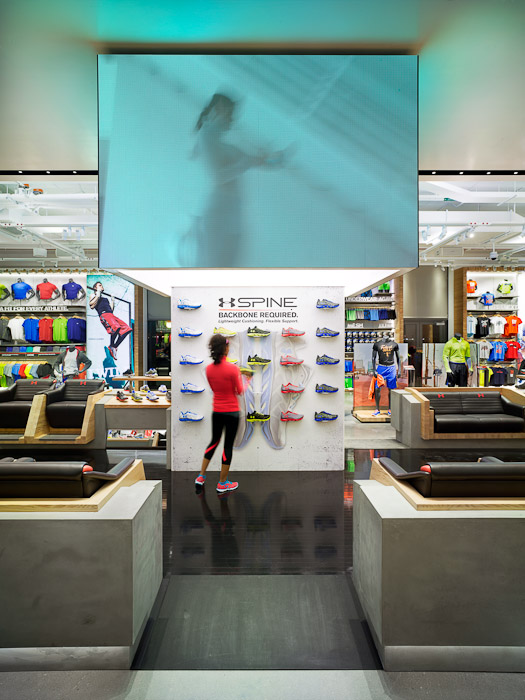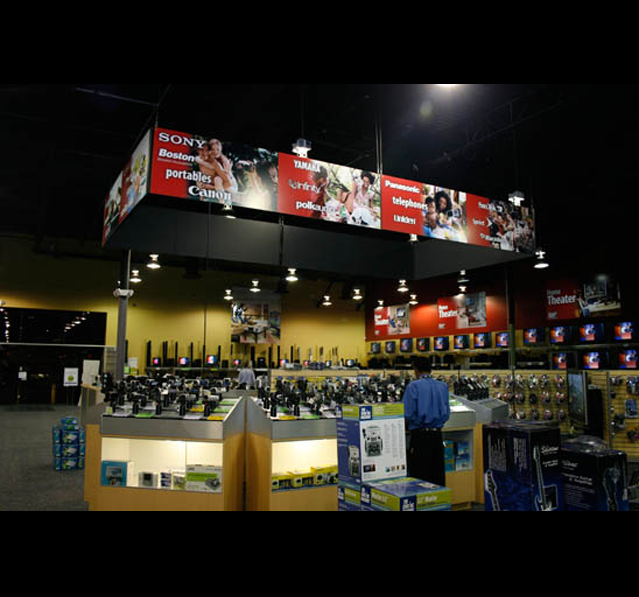by Jennifer Barham
Last February, an ice storm completely shut down my city for a few days. When the sun came out and the temperature rose and the ice began to melt, the weight of the sliding ice and snow from our roof slowly crushed and collapsed our carport. No one was hurt, but we found ourselves scrambling to figure out what to do – how do we enter the house? Where and how do we park? How do we efficiently clean up, clear out, and rebuild? What will work better for us in the future (now that we have FIVE drivers instead of two!). How much will it cost and what can we spend?
Omnichannel retail is a little like that ice storm. It’s unexpected and it creates a whirlwind of activity related to how to handle it and the effects of it.
Omnichannel retail skyrocketed with the pandemic, so maybe you weren’t ready for it, but its arrival is an opportunity to figure out better ways to meet consumer expectations and needs, and to build back a better strategy that will work for you.
In short, your business seeks to provide what Frost & Sullivan call “seamless, effortless, high-quality customer experiences that occur within and between contact channels.” Of course, to your customers it should appear “seamless, effortless,” but on your end: many seams, much effort. Here are some ways to embrace this new challenge.
Avail yourself of QR codes and APPLY them wherever you can. Social distancing and extra measures of cleanliness have made QR (Quick Response) codes more popular than ever, enabling users to almost-instantly retrieve information. Retailers can use QR codes to direct their customers to social media pages, to view product availability and proximity, to download product/service information, to get more information about a product, and more.
The 19 Crimes wine brand – celebrating the Australian culture built by Brits who were “transported” there upon conviction of any one of 19 crimes (impersonating an Egyptian?!) – posts a QR code on its label and shoppers who scan the code will be delighted by a live video explaining the crime and the criminal featured on the particular bottle. They call it “live labels” and it’s fascinatingly addictive!
Some Main Street stores in our town use QR codes on store front window display items to allow customers to window shop virtually – letting customers see more of the same or similar products, add products to their virtual cart, and shop when the store is actually closed.
With 67% of surveyed shoppers reporting that scannable codes would make them likely to revisit a store, QR codes simply ramp up the attractiveness of any retail environment.
Break the rules. Your own rules, that is. Maybe you swore you’d never have a webpage or a social media presence or mobile checkout. Maybe you’ve had a rule of never dangling a coupon or a discount for your high-end service. Whatever the imperative is that you’ve been stubborn about, test it now. Perhaps now is the exact right time to ponder the thing you didn’t want to do – the time to let a new creative thought enter your consideration.
Maybe an incentive IS a good idea – it doesn’t mean you are lowering your standards or your products’ value. Maybe touchless checkout is worth looking into at this point. Maybe it’s time to crank out your Instagram stories or Facebook live presence occasionally. You can start simple – post a QR code at your B&M’s entrance which scanners are welcomed with cheer or today’s specials or more fun information about where they are.
Be like that other rule-breaking company and JUST. DO. IT.
Consider your customers and create what they need. The options are limitless when it comes to what ideas and methodologies and systems you can employ in your business. It’s kind of like going to the paint store and suddenly realizing there are 3,000 paint options and then deciding you just want white paint and then realizing there are 500 white options. Overwhelming.
Step back and consider who you are trying to reach. What do your customers want and need? What do they like? What do they NOT like? What are their goals? What are their motivations and their values? Where do they find out about new products or get information about new purchases?
For example, you already know that if you are marketing to the +55 demographic, you probably don’t need to rely solely on social media or smartphone-based shopping. But if you’re trying to attract millennials, you absolutely do.
The majority of retailers have a really strong mobile ordering piece to their sales, but consider Bath & Body Works. Largely a sensory experience from the moment customers come within 20 feet of the store, Bath & Body Works depends on getting customers physically inside their stores to reach them. They expect that their customers will need to smell and feel and hold their products to experience the necessary holistic elements that are a huge part of their brand. And while they do have a website so that customers can re-order their favorites and take advantage of deals, it would be ludicrous to depend on a website to carry their business, which is based on interacting with the products.
Data is the key to mapping WHO your customers are and HOW to reach them, and there are a slew of metrics to track in order to know how they intersect with you. The easiest way to start is to encourage customers to take a survey asking them about the information you need to meet them where they are. To guarantee the best participation in the survey, offer an incentive in return for completing the survey.
Diversify your touch points. It seems obvious that you would want to sell and market your products and services wherever it is that your customers shop or browse or investigate for more information; and yet, not all retailers are taking advantage of multiple channels. Retail-wise, the world has exploded – people can purchase from B&M locales, social media, online marketplaces, product/retail websites, influencer sites, and more. A global survey last year showed that 90% of shoppers use two or more channels and/or devices and, just as important, they expect their shopping experience to be consistent across channels.
This means that each channel you expect your customers to engage in needs to be the same quality and quickness and convenience as the other. Don’t hurriedly create an app for your business if you aren’t going to integrate and update it. Don’t offer multiple avenues if you aren’t upkeeping both congruently.
Another way of diversifying is to offer multiple options for other features. If your store is shop-in only, consider offering curbside or delivery or BOPIS (buy online pay in store). If you don’t already have touchless checkout, look into starting there with flexible checkout options like self-checkout or checking out through the app.
Diversifying doesn’t mean that you have to stretch yourself to do everything everyone else is doing; it means thinking outside the box in order to give YOURSELF and your business more flexibility to offer your customers.
Educate your customers. The more you educate your customers on WHY they should purchase from you, the more you will sell. An easy avenue for educating them is through high quality, engaging content – blog posts, social media blasts, live videos, and many more.
- Consider an Instagram story where you invite your audience to “ASK ME ANYTHING!”; be sure to answer post the questions and answers in your stories.
- Create explanation videos for keystone products or services. Make them interesting, funny, and inviting. Encourage them about how they could use it and why they need it.
- Think about how you might do a series of tutorials for your business, helping customers see how to do or use what you have.
- To encourage participation and be able to measure interaction, you can post “polls” on social media asking people to answer questions that you ask. A nearby outdoors store posts a series of questions before every weekend related to the outdoor season (ballgames, fishing, camping, etc.): “How many bear attacks occur each year?” “What’s the largest fish ever caught in Percy Priest Lake?” “What’s your least favorite thing about hiking?” “Which team are you rooting for this weekend?” Some of these are fun and silly and some are educational and interesting, but they all draw customers in on a regular basis and kick up the business.
Figure out a new-to-you medium. Ok, it’s time. It’s past time. GET ON SOCIAL. If you’re on social, get on TikTok. If you’ve got all those covered, try Amazon Marketplace or Etsy or any one of dozens of alternative ways to be seen and reach new customers.
Albert Einstein famously said, “Life is like riding a bicycle. To keep your balance, you must keep moving.” The same can be said of the retail business – in order to stay steady and afloat, you gotta keep moving, man. As soon as you start coasting, you know you’re going downhill. On the other hand, constantly learning something new or trying something new increases your brain power, gives you an endorphin boost, and helps you be more interesting.








